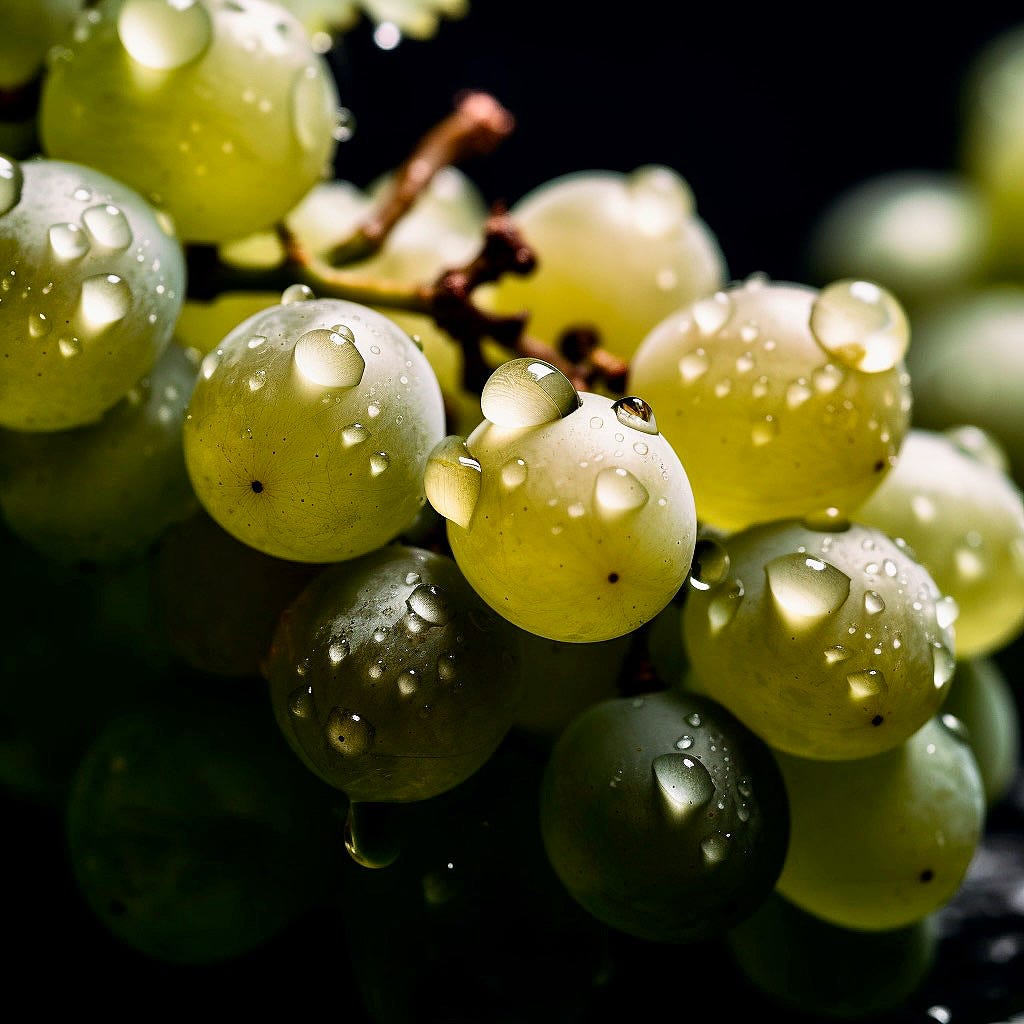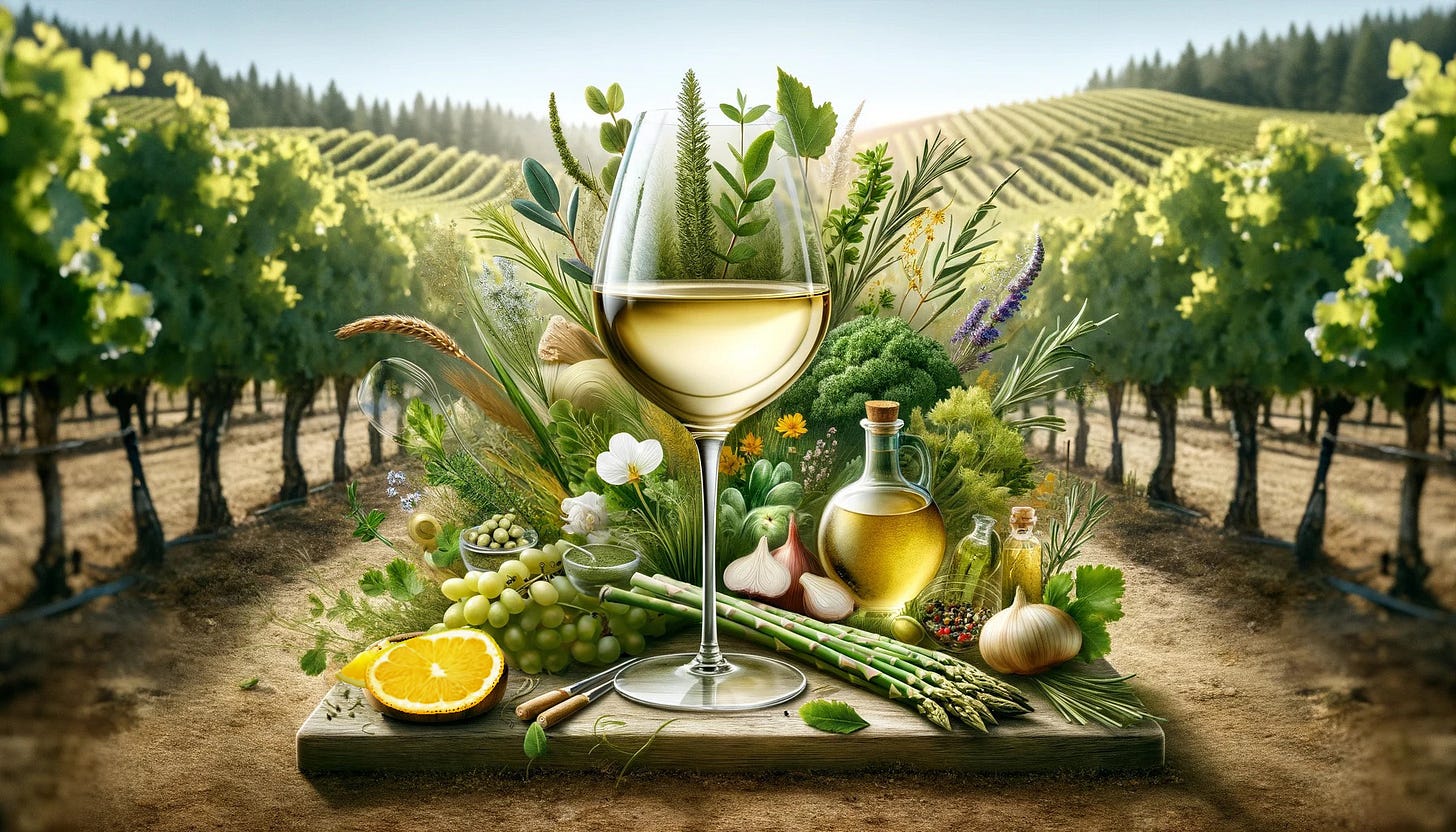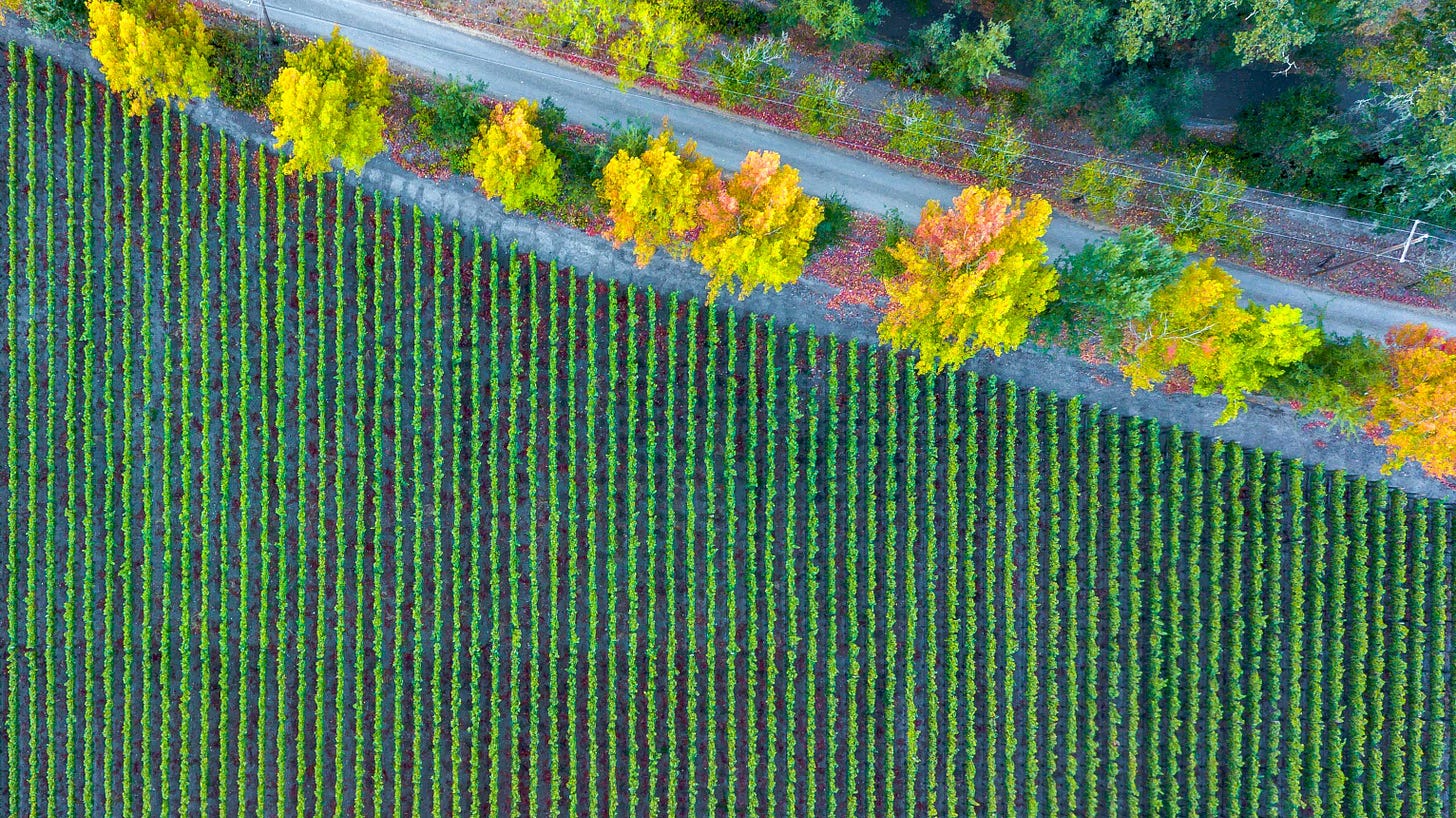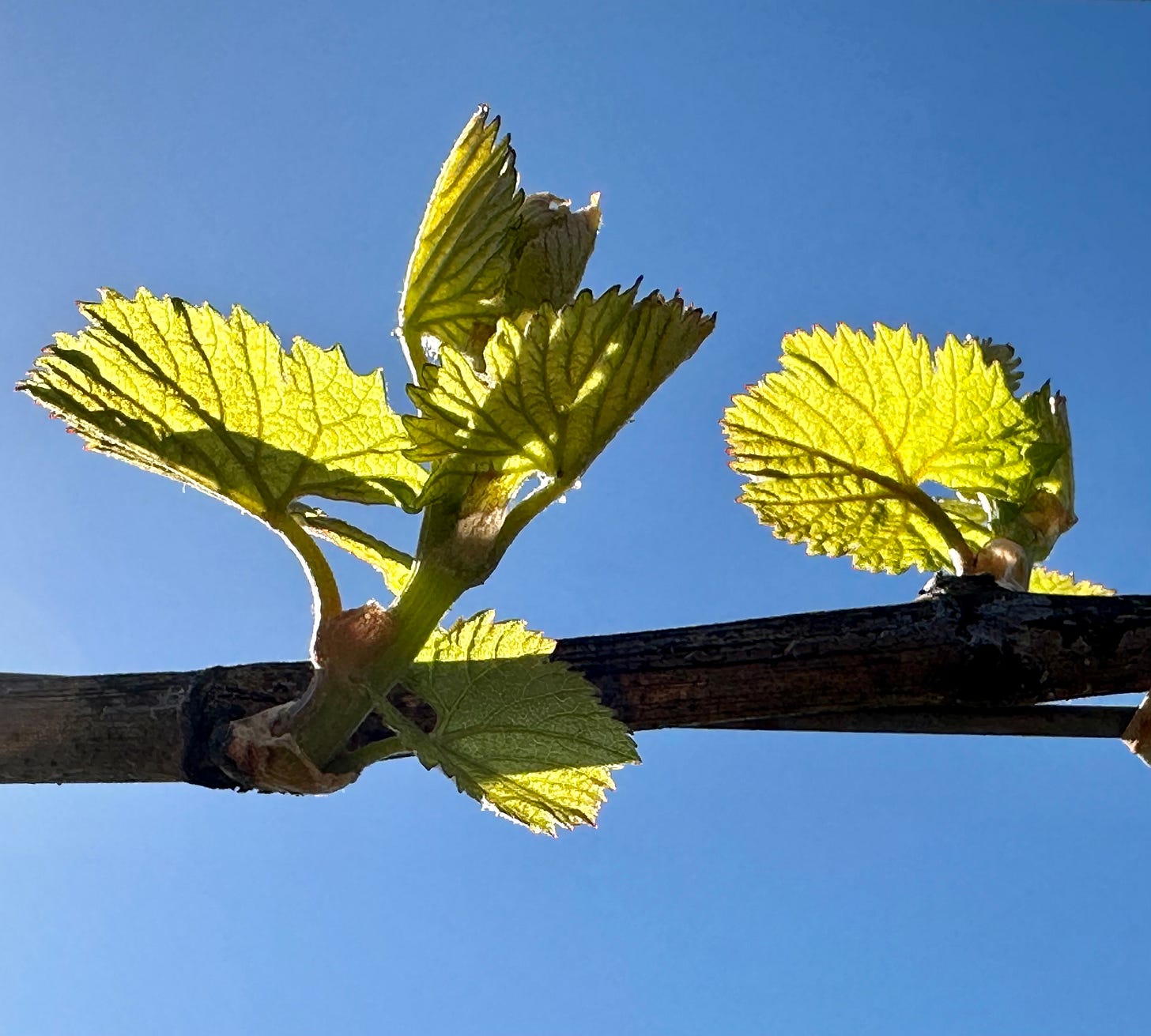Dan Berger’s Varietal Views: Sauvignon blanc
By Dan Berger
NAPA VALLEY, Calif. — One of the most popular wines in the country these days is sauvignon blanc, but it wasn’t so long ago that you couldn’t give the stuff away. Sauvignon blanc is probably the most unlikely grape to ever gain broad acceptance in the United States. Yet now it is challenging chardonnay for preeminence, notably in restaurants. Almost every restaurant now has more than one white wine by the glass; after chardonnay, the next choice is sauvignon blanc.
The demand for sauvignon blanc grapes continues to increase, even as national wine sales are down over the last 18 months.
In this second installment of "Varietal Views," our investigation into various varietal wines and the grapes that make them, we look into a grape/wine that is diametrically opposed to the one we spoke about last week: fruit-driven riesling. While SB and riesling have very little in common, there are commonalities that we will explore toward the end of this commentary.
The major differences between sauvignon blanc and riesling are that the two varieties display fruit components that are polar opposites. Where riesling has floral, tropical notes and flower-basket aromatics, sauvignon blanc is more herbal with a trace of green leaf, dried herbs and maybe even olive oil. Classic versions of sauvignon blanc display light but noticeable herbal elements not unlike oregano, tarragon or even asparagus. And the reason it was under-appreciated in the 1990s was that some, especially those grown in cooler or windier climates, had aromatics that reminded some people of bell pepper.
Although that particular scent was natural in SB in small concentrations, people seeking more fruity elements such as those found in chardonnay often were put off by SB’s assertive herbal characteristics. The fact that it was radically different from chardonnay was a wonderful thing for wine purists who relished its uniqueness, as well as the fact that it typically was made without any barrel contact.
Summary found in this article:
Classic versions with herbal characteristics are grown in Loire Valley, France (Sancerre, Pouilly-fumé).
Varied styles, some called fumé blanc, are found in California, U.S. (especially Oakville and Dry Creek Valley).
Distinctive, slightly sweet style with exotic aromas like lime and gooseberry is found in New Zealand (notably Marlborough).
Often blended with sémillon, creating dry white Bordeaux wines, in Bordeaux, France.
Significant plantings contributing to global diversity are found in South Africa, Chile and Austria.
Produces stylish wines, including successful examples like Hanna’s sauvignon blanc, in Russian River Valley, U.S.
Characteristics include herbal (oregano, tarragon, asparagus), green leaf, dried herbs, olive oil. Some have floral, tropical notes. Often lighter, more herbal than chardonnay.
Higher-quality, dry versions can develop complex aromatics with aging.
Wine lovers already had experience with SB from the eastern end of the Loire Valley with Sancerre and Pouilly-fumé. These wines were highly regarded as the classic examples of the grape and the wine it produced. They adored that some of the finest examples actually took on remarkable characteristics after 10 to 20 years of cellar aging!
(Unfortunately, in the last few years, many examples of Loire Valley SB wines have shown a lot less of the herbal personality that I adore. At the same time, Loire alcohol levels seem to be creeping up, making the wine a little too soft and not quite as dry or food-friendly as they once were.)
Just 50 years ago, almost no sauvignon blanc was planted in California. Robert Mondavi had fallen in love with this grape from the Loire, where it was occasionally referred to as blanc fumé. Mondavi had some acres of the grape planted at his Oakville property, but he suspected that it wouldn’t sell if it were called sauvignon blanc.
So, he reversed the French terms, called his wine fumé blanc, and made every effort to capture the authentic herbal notes in the grape. It was excellent. I remember trying early bottlings in the 1970s and thinking that it was an acquired taste.
At almost exactly the same time, MIT graduate David Stare had acquired a property deep into the Dry Creek Valley. His adoration for this particular variety led him to plant sauvignon blanc and produce a dry wine from it. He, too, used the name fumé blanc. Fortuitously, as it turned out, Dry Creek Vineyard had discovered that the region was perfect for the variety.
Sauvignon blanc is a hardy grape that grows almost anywhere but prefers lighter soils in cooler climes. (Heavier soils often yield grassier, bell pepper-y aromas. In warm areas, it must be picked earlier to preserve the varietal character. In hot climates, the variety doesn’t often display any of its true varietal nature.)
There are clear benefits to planting this superb grape. As a mid-season ripener, it usually avoids late-season heat waves and rain. It is relatively vigorous, usually producing a good-sized crop, and in good vintages, the aromatics can be so overwhelmingly complex that it is almost impossible to describe.
In the early 1990s, winemaker Gary Farrell called me and asked if I could join him at his winery. He said a load of sauvignon blanc grapes had been delivered to his Russian River Valley winery and he thought I would appreciate seeing it. I drove out, reaching the crush pad before the grapes had been removed from the trucks. The aroma was so exotic I could come up with no words to describe it!
Besides growing well in the Loire Valley and Dry Creek Valley, it also has a long history in New Zealand and also produces stylish wines in the Russian River Valley. (One of the state’s huge success stories in the last few years has been Hanna’s SB from Russian River Valley.
It was not until the late 1990s when sauvignon blanc’s fortunes began to change. And it was an unlikely situation that occurred to shift things to overdrive. The first exotic examples of sauvignon blanc’s new image came from a relatively expensive import from New Zealand.
The wine was called Cloudy Bay from Marlborough. It was made by a brilliant team, winemaker Kevin Judd and enologist James Healy. Because New Zealand is such a cool and breezy wine country, acidity levels are typically quite high. So, to make the wine more palatable, most of the sauvignon blancs from New Zealand were slightly sweet.
The combination was appealing to Americans in a way that was really unanticipated. Moreover, the New Zealand style had an exotic aroma, starting with lime, fresh gooseberries, a trace of “cat pee,” and other mysterious aromatics like passion fruit, tropical flowers and green tea.
Some of the new imports in 1999 included one from Kumeu River Wines, which had a fascinating aromatic that was not dissimilar from iodine! Despite that description, the wine was so fascinating for wine lovers, it began to be almost as successful in some areas as the Cloudy Bay.
After James Healy left Cloudy Bay, he joined grape grower Ivan Sutherland at the highly regarded Dog Point Vineyard in Marlborough. Healy has recently moved to Nelson where he will make wines under a new label.
One of less-known aspects of SB is how remarkable it can age. Of course, sweeter versions, such as the $10 to $15 New Zealand bargains that seem to be everywhere, really are designed to be consumed in the first two or three years. But more serious versions (dry) can be flabbergasting when they have taken on some bottle bouquet. I discovered this by accident in 1984. Digging through my wine collection, which then was stored in an old walk-in refrigerator in my garage, I found, back in the corner lying on the floor of the refrigerator case, a bottle of 1973 Foppiano Sonoma Fumé, a sauvignon blanc that I had forgotten.
That evening for dinner, I pulled the cork, expecting the wine to be tired. What I got from this 11-year-old SB was an amazing array of aromatics that clearly defined what sauvignon blanc can do when it is aged in a cool location.
About 20 years ago, David Stare decided to stage a tasting of older examples of Dry Creek Vineyards fumé blanc. The results were astounding. Almost every bottle (one may have had a bad cork) displayed gorgeous fruit and also exposed some of the most interesting scents I have ever experienced.
One wine that stood out for its overwhelming personality was the 1977 Dry Creek Fumé Blanc, which displayed such fascinating elements as cilantro, tomatillo and pears! After the tasting, more than half a bottle remained, so we took it with us and went out for Mexican food!
Then there was the time when a group of wine collectors gathered for a Friday lunch at a Santa Monica restaurant. One attendee brought a 25-year-old bottle of Baron de L from the house of Ladoucette, a fabulous Pouilly-fumé producer. I had never experienced anything quite like that old, perfectly definable French sauvignon blanc.
As for the vast majority of sauvignon blancs now being made, almost all of them are drink-now wines. Many are slightly to noticeably sweet. As such, they resemble riesling, most of which also have some residual sugar and/or lower acidity levels. As such, they can be nicely paired with Asian foods. In combination with vegetarian Thai dishes, SB and riesling work nicely.
However, just because a bottle is five or six years old is no reason to immediately disparage it. As I have learned, older sauvignon blancs can be a treat. There’s usually a lot more going on in such bottles than most people realize! Embrace the herbs!
Dan Berger has been writing about wine since 1975.
Sauvignon blanc recommendations from Napa Valley Features:
The 2022 JH Wheeler Sauvignon Blanc from Napa Valley, priced at $58 per bottle, features vibrant citronella and nectarine scents, with undertones of baked peaches, Meyer lemon. It also exhibits a subtle minerality and delivers a clean, prolonged finish.
The 2022 Honig Napa Valley Sauvignon Blanc, priced at $24 a bottle, offers aromatics of honeysuckle, green tea and tropical fruit and has bright acidity, with a blend of floral notes, stone fruit and lemon-lime citrus flavors on the palate.








I have a bottle of Baron de L 2015 sitting in my wine fridge right now just waiting for the right moment!